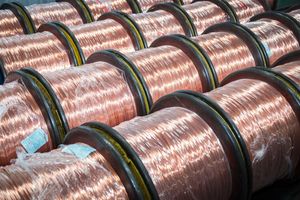
In a bold and ambitious push for technological autonomy, China is fundamentally reshaping the global semiconductor landscape. Driven by national security imperatives, aggressive industrial policies, and escalating geopolitical tensions, particularly with the United States, Beijing's pursuit of self-sufficiency in its domestic semiconductor industry is yielding significant, albeit uneven, progress. As of October 2025, these concerted efforts have seen China make substantial strides in mature and moderately advanced chip technologies, even as the ultimate goal of complete reliance in cutting-edge nodes remains a formidable challenge. The implications of this quest extend far beyond national borders, influencing global supply chains, intensifying technological competition, and fostering a new era of innovation under pressure.
Ingenuity Under Pressure: China's Technical Strides in Chipmaking
China's semiconductor industry has demonstrated remarkable ingenuity in circumventing international restrictions, particularly those imposed by the U.S. on advanced lithography equipment. At the forefront of this effort is Semiconductor Manufacturing International Corporation (SMIC) (SSE: 688981, HKG: 0981), China's largest foundry. SMIC has reportedly achieved 7-nanometer (N+2) process technology and is even trialing 5-nanometer-class chips, both accomplished using existing Deep Ultraviolet (DUV) lithography equipment. This is a critical breakthrough, as global leaders like Taiwan Semiconductor Manufacturing Company (TSMC) (NYSE: TSM) and Samsung Electronics (KRX: 005930) rely on advanced Extreme Ultraviolet (EUV) lithography for these nodes. SMIC's approach involves sophisticated multi-patterning techniques like Self-Aligned Quadruple Patterning (SAQP), and potentially even Self-Aligned Octuple Patterning (SAOP), to replicate ultra-fine patterns, a testament to innovation under constraint. While DUV-based chips may incur higher costs and potentially lower yields compared to EUV, they are proving "good enough" for many modern AI and 5G workloads.
Beyond foundational manufacturing, Huawei Technologies, through its HiSilicon division, has emerged as a formidable player in AI accelerators. The company's Ascend series, notably the Ascend 910C, is a flagship chip, with Huawei planning to double its production to around 600,000 units in 2025 and aiming for 1.6 million dies across its Ascend line by 2026. Huawei has an ambitious roadmap, including the Ascend 950DT (late 2026), 960 (late 2027), and 970 (late 2028), with a goal of doubling computing power annually. Their strategy involves creating "supernode + cluster" computing solutions, such as the Atlas 900 A3 SuperPoD, to deliver world-class computing power even with chips manufactured on less advanced nodes. Huawei is also building its own AI computing framework, MindSpore, as an open-source alternative to Nvidia's (NASDAQ: NVDA) CUDA.
In the crucial realm of memory, ChangXin Memory Technologies (CXMT) is making significant strides in LPDDR5 production and is actively developing High-Bandwidth Memory (HBM), essential for AI and high-performance computing. Reports from late 2024 indicated CXMT had begun mass production of HBM2, and the company is reportedly building HBM production lines in Beijing and Hefei, with aims to produce HBM3 in 2026 and HBM3E in 2027. While currently a few generations behind market leaders like SK Hynix (KRX: 000660) and Samsung, CXMT's rapid development is narrowing the gap, providing a much-needed domestic source for Chinese AI companies facing supply constraints.
The push for self-sufficiency extends to the entire supply chain, with significant investment in semiconductor equipment and materials. Companies like Advanced Micro-Fabrication Equipment Inc. (AMEC) (SSE: 688012), NAURA Technology Group (SHE: 002371), and ACM Research (NASDAQ: ACMR) are experiencing strong growth. By 2024, China's semiconductor equipment self-sufficiency rate reached 13.6%, with notable progress in etching, Chemical Vapor Deposition (CVD), Physical Vapor Deposition (PVD), and packaging equipment. There are also reports of China testing a domestically developed DUV immersion lithography machine, with the goal of achieving 5nm or 7nm capabilities, though this technology is still in its nascent stages.
A Shifting Landscape: Impact on AI Companies and Tech Giants
China's semiconductor advancements are profoundly impacting both domestic and international AI companies, tech giants, and startups, creating a rapidly bifurcating technological environment. Chinese domestic AI companies are the primary beneficiaries, experiencing a surge in demand and preferential government procurement policies. Tech giants like Tencent Holdings Ltd. (HKG: 0700) and Alibaba Group Holding Ltd. (NYSE: BABA) are actively integrating local chips into their AI frameworks, with Tencent committing to domestic processors for its cloud computing services. Baidu Inc. (NASDAQ: BIDU) is also utilizing in-house developed chips to train some of its AI models.
Huawei's HiSilicon is poised to dominate the domestic AI accelerator market, offering powerful alternatives to Nvidia's GPUs. Its CloudMatrix system is gaining traction as a high-performance alternative to Nvidia systems. Other beneficiaries include Cambricon Technology (SSE: 688256), which reported a record surge in profit in the first half of 2025, and a host of AI startups like DeepSeek, Moore Threads, MetaX, Biren Technology, Enflame, and Hygon, which are accelerating IPO plans to capitalize on domestic demand for alternatives. These firms are forming alliances to build a robust domestic AI supply chain.
For international AI companies, particularly U.S. tech giants, the landscape is one of increased competition, market fragmentation, and geopolitical maneuvering. Nvidia (NASDAQ: NVDA), long the dominant player in AI accelerators, faces significant challenges. Huawei's rapid production of AI chips, coupled with government support and competitive pricing, poses a serious threat to Nvidia's market share in China. U.S. export controls have severely impacted Nvidia's ability to sell its most advanced AI chips to China, forcing it and Advanced Micro Devices (AMD) (NASDAQ: AMD) to offer modified, less powerful chips. In August 2025, reports indicated that Nvidia and AMD agreed to pay 15% of their China AI chip sales revenue to the U.S. government for export licenses for these modified chips (e.g., Nvidia's H20 and AMD's MI308), a move to retain a foothold in the market. However, Chinese officials have urged domestic firms not to procure Nvidia's H20 chips due to security concerns, further complicating market access.
The shift towards domestic chips is also fostering the development of entirely Chinese AI technology stacks, from hardware to software frameworks like Huawei's MindSpore and Baidu's PaddlePaddle, potentially disrupting the dominance of existing ecosystems like Nvidia's CUDA. This bifurcation is creating a "two-track AI world," where Nvidia dominates one track with cutting-edge GPUs and a global ecosystem, while Huawei builds a parallel infrastructure emphasizing independence and resilience. The massive investment in China's chip sector is also creating an oversupply in mature nodes, leading to potential price wars that could challenge the profitability of foundries worldwide.
A New Era: Wider Significance and Geopolitical Shifts
The wider significance of China's semiconductor self-sufficiency drive is profound, marking a pivotal moment in AI history and fundamentally reshaping global technological and geopolitical landscapes. This push is deeply integrated with China's ambition for leadership in Artificial Intelligence, viewing indigenous chip capabilities as critical for national security, economic growth, and overall competitiveness. It aligns with a broader global trend of technological nationalism, where major powers prioritize self-sufficiency in critical technologies, leading to a "decoupling" of the global technology ecosystem into distinct, potentially incompatible, supply chains.
The U.S. export controls, while intended to slow China's progress, have arguably acted as a catalyst, accelerating domestic innovation and strengthening Beijing's resolve for self-reliance. The emergence of Chinese AI models like DeepSeek-R1 in early 2025, performing comparably to leading Western models despite hardware limitations, underscores this "innovation under pressure." This is less about a single "AI Sputnik moment" and more about the validation of a state-led development model under duress, fostering a resilient, increasingly self-sufficient Chinese AI ecosystem.
The implications for international relations are significant. China's growing sophistication in its domestic AI software and semiconductor supply chain enhances its leverage in global discussions. The increased domestic capacity, especially in mature-node chips, is projected to lead to global oversupply and significant price pressures, potentially damaging the competitiveness of firms in other countries and raising concerns about China gaining control over strategically important segments of the semiconductor market. Furthermore, China's semiconductor self-sufficiency could lessen its reliance on Taiwan's critical semiconductor industry, potentially altering geopolitical calculations. There are also concerns that China's domestic chip industry could augment the military ambitions of countries like Russia, Iran, and North Korea.
A major concern is the potential for oversupply, particularly in mature-node chips, as China aggressively expands its manufacturing capacity. This could lead to global price wars and disrupt market dynamics. Another critical concern is dual-use technology – innovations that can serve both civilian and military purposes. The close alignment of China's semiconductor and AI development with national security goals raises questions about the potential for these advancements to enhance military capabilities and surveillance, a primary driver behind U.S. export controls.
The Road Ahead: Future Developments and Challenges
Looking ahead, China's semiconductor journey is expected to feature continued aggressive investment and targeted development, though significant challenges persist. In the near-term (2025-2027), China will continue to expand its mature-node chip capacity, further contributing to a global oversupply and downward price pressure. SMIC's progress in 7nm and 5nm-class DUV production will be closely watched for yield improvements and effective capacity scaling. The development of fully indigenous semiconductor equipment and materials will accelerate, with domestic companies aiming to increase the localization rate of photoresists from 20% in 2024 to 50% by 2027-2030. Huawei's aggressive roadmap for its Ascend AI chips, including the Atlas 950 SuperCluster by Q4 2025 and the Atlas 960 SuperCluster by Q4 2027, will be crucial in its bid to offset individual chip performance gaps through cluster computing and in-house HBM development. The Ministry of Industry and Information Technology (MIIT) is also pushing for automakers to achieve 100% self-developed chips by 2027, a significant target for the automotive sector.
Long-term (beyond 2027), experts predict a permanently regionalized and fragmented global semiconductor supply chain, with "techno-nationalism" remaining a guiding principle. China will likely continue heavy investment in novel chip architectures, advanced packaging, and alternative computing paradigms to circumvent existing technological bottlenecks. While highly challenging, there will be ongoing efforts to develop indigenous EUV technology, with some experts predicting significant success in commercial production of more advanced systems with some form of EUV technology ecosystem between 2027 and 2030.
Potential applications and use cases are vast, including widespread deployment of fully Chinese-made AI systems in critical infrastructure, autonomous vehicles, and advanced manufacturing. The increase in mid- to low-tech logic chip capacity will enable self-sufficiency for autonomous vehicles and smart devices. New materials like Wide-Bandgap Semiconductors (Gallium Nitride, Silicon Carbide) are also being explored for advancements in 5G, electric vehicles, and radio frequency applications.
However, significant challenges remain. The most formidable is the persistent gap in cutting-edge lithography, particularly EUV access, which is crucial for manufacturing chips below 5nm. While DUV-based alternatives show promise, scaling them to compete with EUV-driven processes from global leaders will be extremely difficult and costly. Yield rates and quality control for advanced nodes using DUV lithography present monumental tasks. China also faces a chronic and intensifying talent gap in its semiconductor industry, with a predicted shortfall of 200,000 to 250,000 specialists by 2025-2027. Furthermore, despite progress, a dependence on foreign components persists, as even Huawei's Ascend 910C processors contain advanced components from foreign chipmakers, highlighting a reliance on stockpiled hardware and the dominance of foreign suppliers in HBM production.
Experts predict a continued decoupling and bifurcation of the global semiconductor industry. China is anticipated to achieve significant self-sufficiency in mature and moderately advanced nodes, but the race for the absolute leading edge will remain fiercely competitive. The insatiable demand for specialized AI chips will continue to be the primary market driver, making access to these components a critical aspect of national power. China's ability to innovate under sanctions has surprised many, leading to a consensus that while a significant gap in cutting-edge lithography persists, China is rapidly closing the gap in critical areas and building a resilient, albeit parallel, semiconductor supply chain.
Conclusion: A Defining Moment in AI's Future
China's semiconductor self-sufficiency drive stands as a defining moment in the history of artificial intelligence and global technological competition. It underscores a fundamental shift in the global tech landscape, moving away from a single, interdependent supply chain towards a more fragmented, bifurcated future. While China has not yet achieved its most ambitious targets, its progress, fueled by massive state investment and national resolve, is undeniable and impactful.
The key takeaway is the remarkable resilience and ingenuity demonstrated by China's semiconductor industry in the face of stringent international restrictions. SMIC's advancements in 7nm and 5nm DUV technology, Huawei's aggressive roadmap for its Ascend AI chips, and CXMT's progress in HBM development are all testaments to this. These developments are not merely incremental; they represent a strategic pivot that is reshaping market dynamics, challenging established tech giants, and fostering the emergence of entirely new, parallel AI ecosystems.
The long-term impact will be characterized by sustained technological competition, a permanently fragmented global supply chain, and the rise of domestic alternatives that erode the market share of foreign incumbents. China's investments in next-generation technologies like photonic chips and novel architectures could also lead to breakthroughs that redefine the limits of computing, particularly in AI. The strategic deployment of economic statecraft, including import controls and antitrust enforcement, will likely become a more prominent feature of international tech relations.
In the coming weeks and months, observers should closely watch SMIC's yield rates and effective capacity for its advanced node production, as well as any further updates on its 3nm development. Huawei's continued execution of its aggressive Ascend AI chip roadmap, particularly the rollout of the Ascend 950 family in Q1 2026, will be crucial. Further acceleration in the development of indigenous semiconductor equipment and materials, coupled with any new geopolitical developments or retaliatory actions, will significantly shape the market. The progress of Chinese automakers towards 100% self-developed chips by 2027 will also be a key indicator of broader industrial self-reliance. This evolving narrative of technological rivalry and innovation will undoubtedly continue to define the future of AI.
This content is intended for informational purposes only and represents analysis of current AI developments.
TokenRing AI delivers enterprise-grade solutions for multi-agent AI workflow orchestration, AI-powered development tools, and seamless remote collaboration platforms. For more information, visit https://www.tokenring.ai/.





